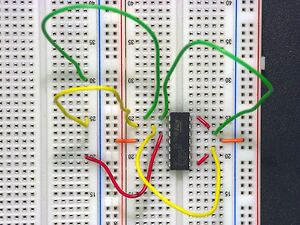Difference between revisions of "EGR 224/Active Filter"
Jump to navigation
Jump to search
| Line 2: | Line 2: | ||
== Points of Clarification == | == Points of Clarification == | ||
* 8.4.2 - be sure to complete the wiring in Tables 5.1-5.4 '''''EXCEPT''''' for the wires that go into DAC0OUT, DAC1OUT, and AOGND. Repeat - do NOT install the red wires for DAC0OUT, DAC1OUT, or AOGND. If you are using more than one red wire, you have done something wrong! Installing these wires will short out your audio source and you will not be able to get sufficient volume. | * 8.4.2 - be sure to complete the wiring in Tables 5.1-5.4 '''''EXCEPT''''' for the wires that go into DAC0OUT, DAC1OUT, and AOGND. Repeat - do NOT install the red wires for DAC0OUT, DAC1OUT, or AOGND. If you are using more than one red wire, you have done something wrong! Installing these wires will short out your audio source and you will not be able to get sufficient volume. | ||
| + | * In all cases, make sure the breadboard is turned on and the voltages are turned fully on '''''before''''' taking your data. The danger here is that the original sound '''c1''' will sound OK even if the power is off since it does not pass through any op-amps. The important data - '''c4''' - will be wrong, however, unless the op-amps are powered. | ||
== Images == | == Images == | ||
Revision as of 17:11, 7 April 2009
The following page provides some supplemental information for the Active Filters lab for EGR 119L. It has been updated to Spring, 2009.
Points of Clarification
- 8.4.2 - be sure to complete the wiring in Tables 5.1-5.4 EXCEPT for the wires that go into DAC0OUT, DAC1OUT, and AOGND. Repeat - do NOT install the red wires for DAC0OUT, DAC1OUT, or AOGND. If you are using more than one red wire, you have done something wrong! Installing these wires will short out your audio source and you will not be able to get sufficient volume.
- In all cases, make sure the breadboard is turned on and the voltages are turned fully on before taking your data. The danger here is that the original sound c1 will sound OK even if the power is off since it does not pass through any op-amps. The important data - c4 - will be wrong, however, unless the op-amps are powered.
Images
Wiring
Oscilloscope
Click on the pictures at right to make them larger.


